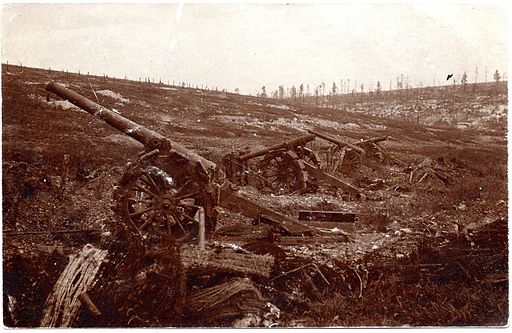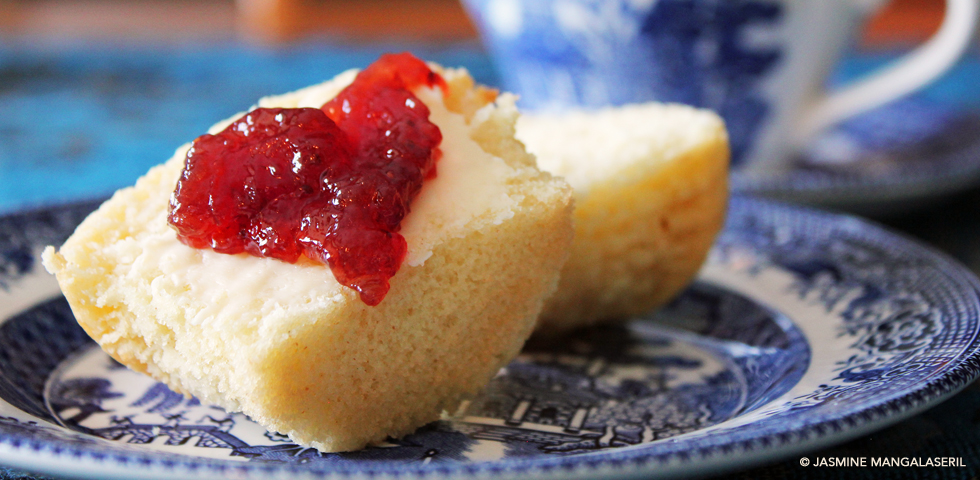
Corsica, Ontario
Every alderman (except for the two who opposed to the name change) attended a special council meeting to decide how to proceed. Mayor Hett wanted ratepayers to have the final word, but Alderman Cleghorn disagreed. He clung to his chestnut that the petition’s 1080 signatures (from a population of 20,000) meant the electorate’s voice wasn’t needed and an appointed committee of 15 should take the reins. The rest of council was split and debated the merits of a plebiscite and optimal committee size. At the end of the day, they thought it best to hold off on any name change decisions until unification with Waterloo was sorted. That said, a committee could be struck to deal with name suggestions.
A counter-petition to allow ratepayers to weigh in on the name change circulated. It gained little traction—many factories wouldn’t allow it on site. Where it was allowed, no one signed, for fear of being labelled anti-British.
As news spread, name suggestions came in from hither and yon. This week’s offerings included Tipperary, Wellington, Emporium, Erlin, and Merlin. Someone from Buffalo, NY, suggested Corsica “for the great Corsican” (I wonder if they were aware Waterloo was next door).
Long before we were, Berlin, Canada was
On 26 February, The Berlin News-Record published WH Breithaupt’s lengthy letter. His spirit echoed his brother’s comments at the citizen’s meeting a few weeks earlier as he argued allowing a small group to toss aside the legacy of the early German residents’ thrift and hard work goes against the British (democratic) system: “What are we fighting for, if not for the cause of freedom and responsible government, for government by consent of the governed?”
A tetchy Cleghorn responded, this time not as a Board of Trade man or alderman, but on behalf of the Recruiting Committee. His snide, abrasive tone brimmed with the sort of British bluster that would make the 118th Battalion’s CO jolly well proud. And like Lochead’s earlier letter (in which the attacks were later recanted), Cleghorn waged a personal attack on Breithaupt: “The Recruiting Committee has evidence that Mr. Breithaupt is not a British subject; is therefore an alien, and would not be entitled to vote on this questions. Such being the case it should have behoved Mr. Breithaupt to keep silent. Has he been voting illegally all these years? Is he today qualified for the municipal office which he holds?”
(In the 1860s, WH Breithaupt emigrated with his family from Buffalo, NY when he was about five years old. Although he spent a few years working in the US, he had lived in Canada for approximately 30 years and was eligible to vote and hold office. Breithaupt instructed his lawyer to request a retraction, or else sue.)
Temperance marches on
Before January’s votes and elections, 555 Ontario communities were dry, and 292 were wet; afterwards, 15 more villages and townships went dry. Premier Hearst was a known temperance ally, which prompted rumours and suppositions as to what Ontario’s Act would entail and if the people would vote on the issue. Manitoba’s proposed prohibition act was a possible model. According to The Berlin Daily Telegraph, if approved, the neighbouring province would abolish bar, shop and club licenses, prohibit liquor sales (except for medical and mechanical purposes), and establish retail and wholesale licences to druggists, allowing them to sell liquor in certain quantities.
As part of the 1 January votes, pro- and anti-temperance campaigns’ large newspaper advertisements pled their cases. One ad by the Toronto-based “Citizen’s Committee of One Hundred” linked dry aspirations to the war effort. A Personal Liberty League of Ontario’s ad reminded voters the last provincial election showed the majority wanted to retain the current licensing system; enacting temperance, while so many voting men were fighting, was wrong. These arguments resurfaced in the days before Hearst’s plans were revealed.
Votes for Women
“For the first time since Confederation, the House of Commons [on 28 February 1916] seriously considered the question of votes for women.” The Honourable William Pugsley, proposed women who could vote in their provincial elections be able to vote in federal elections. He had some support, but Prime Minister Borden opposed it, as he believed women should not be allowed to vote in one province and not the other; he intimated a new Dominion franchise act may be in the offing.
Either the population or the army must go short
In the 15 years preceding the war, Canadians saw prices rise roughly by half. The conflict continued to dash any hope of relief, as evidenced by February’s cost of living statistics. The Index’s new high of 172 accompanied news that the weekly basket costs 31¢ more ($6.14—see note on conversion) than a year earlier and rose to $8.28 ($164.05). Prices for lard, eggs, butter, cheese, sugar, tea, coffee, and potatoes surged highest, while milk, bread, and flour dropped. Wartime inflation wasn’t a Canadian phenomenon—according to The Globe (Toronto), Britain’s cost of living rose five per cent in December 1915, and prices increased 46 per cent since war was declared. The US (still neutral at this point) saw its Index rise from 133 to 137.6.
The British Association of Chambers of Commerce declared the need to readjust Britain’s economic trade policy. They wanted to be as self-reliant as possible, with a tiered set of trade agreements prioritised by relationship to Britain, the Empire and the Allies.
Meanwhile, at a meeting at London (England)’s Guildhall, Lord Kitchener urged thrift across classes. “The dilemma is that either the civilians must go short of things, which they are accustomed to in peace times, or the armies must go short of munitions and other indispensable supplies.” As war was an economic exhaustion and a conflict of armies, he appealed for economy in pretty much everything: coal, foodstuffs, liquor, petrol and oils, tea, coffee, tobacco, and clothing. Every man and woman on the home front should show “the utmost economy and production in consumption. Any failure in this respect helps the enemy win, just as much as the soldier who refuses to do his utmost in the field of battle.”
Battle of Verdun’s early days
For more than a week, stories of Germany’s attempts to take a narrow stretch of land that was dotted with forts in northeast France, peppered local front pages. If Verdun fell, the road would open up, cause a number of communities to fall, and make it relatively easy for the Germans to march into Paris. Verdun was symbolic—a German capture would repeat the Prussian victory in the Siege of Verdun (1792) early in the War of the First Coalition. The 18th Century battle had lasted less than one week before Verdun fell.
(This offensive was intended to change the Great War’s course. Germany assumed it was an easy capture: advance teams knew the forts’ ammunition stores went to the Western Front and defense trenches were incomplete. Regional military command tried to warn the French Commander-in-Chief of the area’s unpreparedness, but Joffre did not act.)
The attack began on 21 February with violent artillery bombardment: 1000 German artillery guns fired on a six-mile line along the French front. As one French soldier wrote: “Men were squashed. Cut in two or divided from top to bottom. Blown into showers; bellies turned inside out; skulls forced into the chest as if by a blow from a club.”
Sir Max Aitken cabled the Canadian Militia Minister, describing the loss and then recapture of Fort Douaumont. He concluded with, “The battle has settled into a ghastly and terrible slaughter.”
British headquarters informed our Prime Minister the Germans had 800,000 men (20 divisions) massed against Verdun and the French had 600,000 (15 divisions). During a slight lull in the bombardment (the Germans probably slowed down to bury their dead), the Allies assumed the enemy was weakening, and the battle would soon end. They did not know that the Battle of Verdun would last until nearly Christmas and become the longest single battle in the war.
Meanwhile, back in Berlin, Ontario, workers removed the statue base that once propped up the bust of Kaiser Wilhelm I in Victoria Park.
Want a bit more information?
- About the Kitchener 1916 Project
- Bank of Canada’s Inflation Calculator was used to calculate modern price equivalents (2016)
The Recipe

I am continually and happily surprised by the kindness of strangers. As a result of Rye and Ginger, someone very kindly gave me a scanned copy of the 1906 Berlin Cook Book. The book is a bit of a conundrum: who compiled it and why are two big questions I have (some think it could be a fundraiser, some think The News-Record published it (I have alternative theories. At some point I’ll don my deerstalker and see what I find). But it is a community cookbook, filled with recipes from Waterloo County and beyond. Few copies exist, so I’m appreciative of my electronic treasure. (One day I hope to have a “real copy” but will happily use this until then).
It contains so many dishes I want to try, but this recipe for cream cake muffins seemed to be a good place to help me calibrate measurements. It’s a simple, sweet cakelette that’s lovely at breakfast or tea. The fact the recipe writer’s initials happen to match Mr. Breithaupt’s above is merely fortuitous (please note: I honestly don’t know if “Mrs. WHB” is his wife or a different contributor).
Cream Cake Muffins by Mrs. WHB (1906 Berlin Cook Book)
Drop 2 eggs in a cup, fill up with sweet cream, then beat well together, add ½ cup sugar, 1 cup flour, 3 teaspoons of baking powder.
Cream Cake Muffins (Modern Equivalent)
Yield: 6 cupcakes
| 115g | 145ml | 2/3 cup less 4 teaspoons | Sugar |
| 115g | 190ml | ¾ cup | All-purpose flour |
| 10ml | 10 ml | 2 teaspoons | Baking powder |
| 2 | 2 | 2 | Eggs (see notes) |
| 150ml | 150ml | 2/3 cup less 1 tablespoon | Half-and-half (10 per cent cream), as needed |
Preheat the oven to 190C/375F. Line the middle six bowls of a standard 12-bowl muffin tray. Partially fill the remaining six bowls with water (between ¼ and ½ full).
Sift the sugar, flour, and baking powder together.
Break the eggs in a measuring jug and pour in enough half-and-half to reach 235ml. Beat the eggs into the cream until it’s a lovely and even golden hue. Pour into the dry bowl and mix well.
Decant into the six lined muffin bowls. Bake for 30-35 minutes, or until done.
Notes
- About eggs: Chances are Mrs. WHB’s eggs would be the equivalent of today’s medium-sized eggs (49-55g each, in shell). I took two of my smaller “large” eggs (53g and 55g)–together their volume measured about 100-110ml.
- About the baking tin: Mrs. WHB didn’t specify the pan she used. As it’s a liquid batter (as opposed to a claggy one), I don’t think she would have used muffin rings, so my best guess is she used either a gem pan or something akin what we know as cupcake tins/small muffin tins.
- If you do use a gem pan, fill as many bowls as you can and adjust the baking time, as they will probably bake in about half the time as cupcakes.
- What I’d do differently:
- Add a good pinch of salt to the dry ingredients.
- Experiment with adding berries or chocolate chips.
- For more information on Canadian egg sizing, please visit the Egg Farmers of Canada’s website
